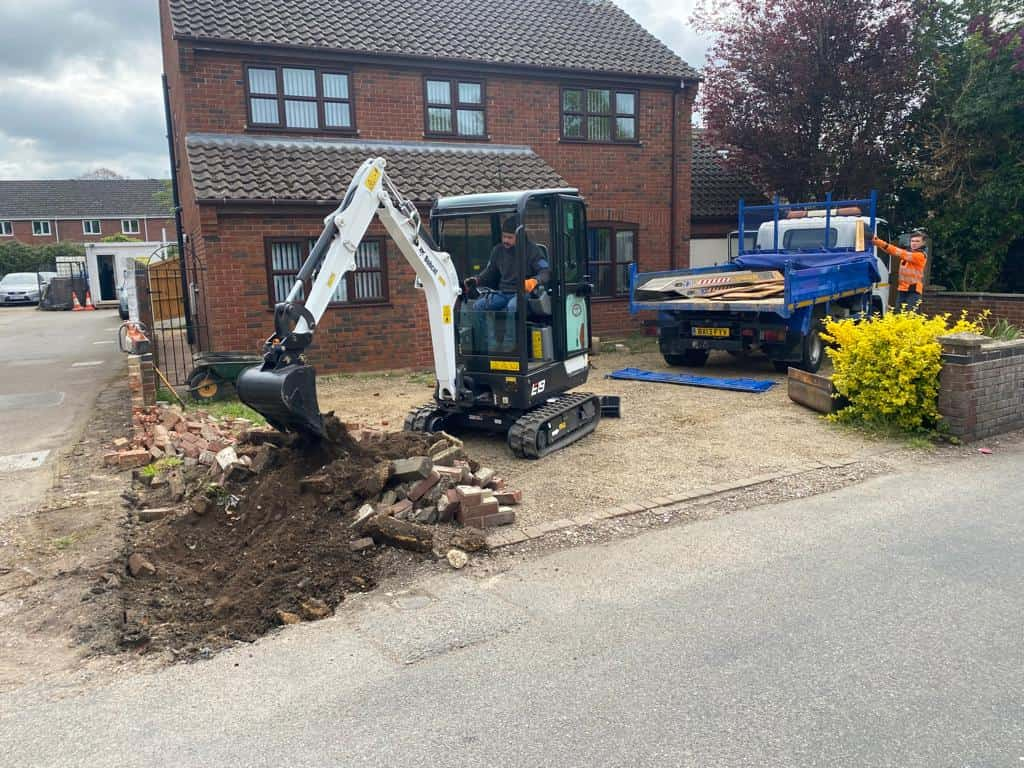Designing Tarmac Parking Lots for Efficient Traffic Flow
Introduction: Effective traffic flow is essential in the design of tarmac parking lots. Not only does it improve safety and convenience, but it also enhances the overall user experience. At Earls Barton Driveways & Patios, we understand the importance of designing parking lots that are both functional and aesthetically pleasing. This blog post will guide you through the key considerations and strategies for designing tarmac parking lots to ensure efficient traffic flow.
Key Considerations for Efficient Traffic Flow
1. Layout Planning
The layout of a parking lot is crucial in determining how traffic will flow. A well-planned layout minimises congestion and ensures vehicles can move smoothly in and out parking spaces.
- One-Way vs. Two-Way Traffic: Decide whether the parking lot will have one-way or two-way traffic. One-way traffic can reduce conflicts and is often easier to navigate, while two-way traffic may be necessary for larger lots to provide more direct access to parking spaces.
- Angled Parking Spaces: Angled parking spaces can make it easier for drivers to enter and exit spaces, reducing the risk of collisions. Common angles include 45, 60, and 90 degrees, offering different advantages regarding space efficiency and ease of use.
2. Clear Signage and Markings
Clear signage and pavement markings are essential for guiding drivers and ensuring smooth traffic flow.
- Directional Arrows: Use directional arrows to indicate the flow of traffic and guide drivers to available parking spaces.
- Parking Space Markings: Mark parking spaces to maximise the number of vehicles accommodated with clarity.
- Signage: Install signs to indicate entrances, exits, pedestrian crossings, and any special parking areas, such as disabled parking or electric vehicle charging stations.
3. Entrance and Exit Points
Strategically placed entrance and exit points can significantly improve traffic flow in a parking lot.
- Multiple Access Points: In larger parking lots, consider having multiple entrances and exits to distribute traffic more evenly and reduce bottlenecks.
- Dedicated Ingress and Egress: Separate ingress (entry) and egress (exit) points can help streamline traffic and reduce the likelihood of conflicts between incoming and outgoing vehicles.
4. Pedestrian Safety
Pedestrian safety is a critical aspect of parking lot design. Ensure pedestrians can move safely through the parking lot without obstructing vehicle traffic.
- Pedestrian Pathways: Designate clear pedestrian pathways that are separate from vehicle lanes. Use pavement markings, raised walkways, or barriers to guide pedestrians safely to and from their vehicles.
- Crosswalks: Mark crosswalks at key points, such as near entrances, exits, and pedestrian pathways, to ensure drivers know of pedestrian crossings.
5. Lighting and Visibility
Proper lighting is essential for safety and security in a parking lot, especially during nighttime or low-light conditions.
- Adequate Lighting: Ensure that the entire parking lot is well-lit, paying particular attention to entrance and exit points, pedestrian pathways, and potential blind spots.
- Security Lighting: Install additional security lighting in areas where visibility is particularly important, such as near payment machines or building entrances.
Strategies for Optimising Traffic Flow
1. Parking Space Dimensions
The dimensions of parking spaces can impact the ease with which drivers can manoeuvre their vehicles.
- Standard Spaces: Typically, standard parking spaces are 2.4 metres wide by 4.8 metres long. Adjust these dimensions based on the expected vehicle size and the parking lot type (e.g., retail vs. residential).
- Compact Spaces: In some areas, including compact spaces for smaller vehicles may be appropriate. These spaces are usually narrower but should still provide adequate room for vehicles to park and manoeuvre safely.
2. Flow Management Techniques
Flow management techniques can reduce congestion and improve the overall efficiency of the parking lot.
- Loop Systems: A loop system, where vehicles follow a designated path through the parking lot, can help manage traffic flow and reduce confusion.
- Zoning: Divide the parking lot into zones based on the type of parking (e.g., short-term, long-term, disabled) to help distribute traffic more evenly and make it easier for drivers to find appropriate parking spaces.
3. Advanced Technologies
Incorporating advanced technologies can further enhance traffic flow and user experience.
- Automated Guidance Systems: Electronic signs or apps direct drivers to available parking spaces, reducing the time spent searching for a spot and minimising congestion.
- Smart Lighting: Implement smart lighting systems that adjust based on the presence of vehicles or pedestrians, improving visibility and safety while conserving energy.
Conclusion: Designing a tarmac parking lot for efficient traffic flow involves carefully planning and considering various factors, from layout and signage to pedestrian safety and lighting. By following the strategies outlined in this blog post, you can ensure that your parking lot is both functional and efficient, enhancing its overall accessibility and usability.
Call us on: 01604 279 793
Click here to find out more about Earls Barton Driveways & Patios
Click here to complete our contact form and see how we can help you with your driveway needs.

